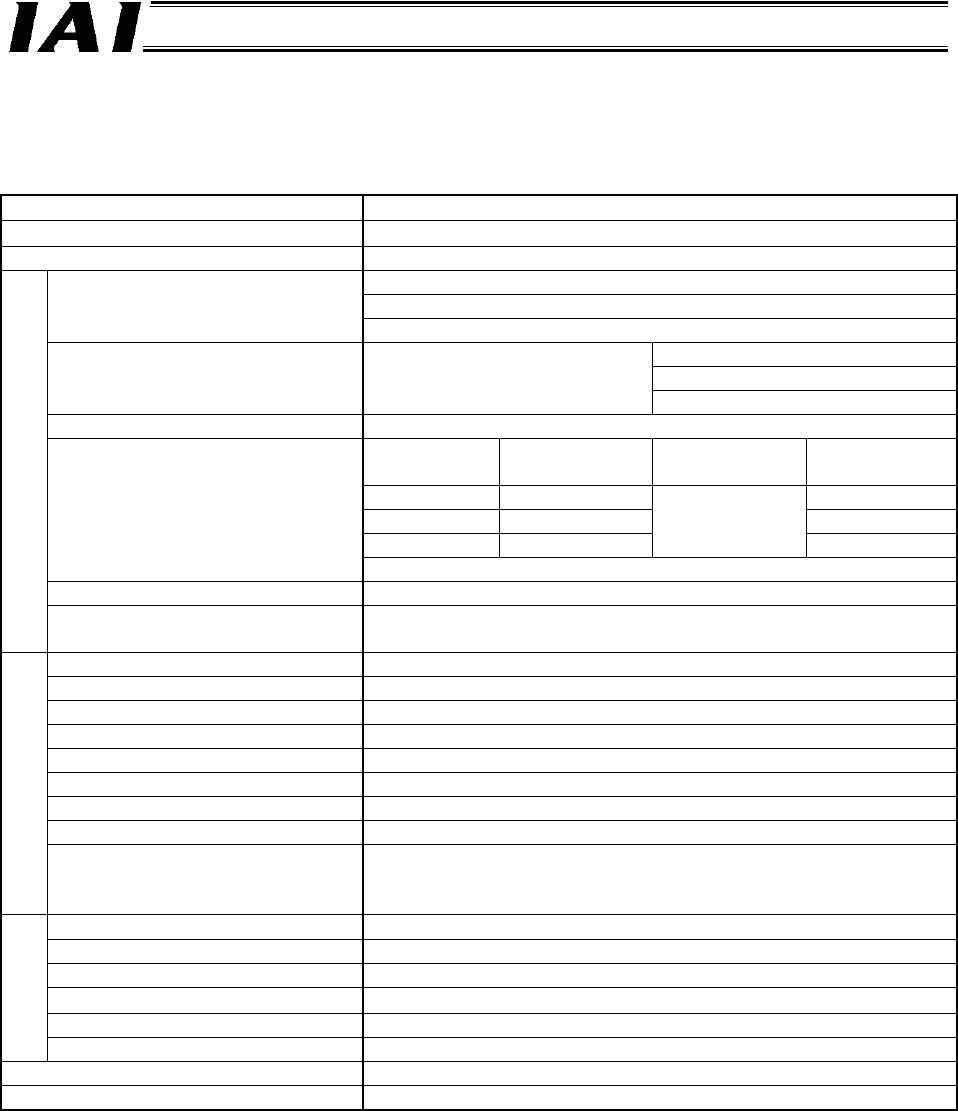Manual
Table Of Contents
- 1. Overview
- 2. Specifications and Name of Each Part
- 2.1 General Specifications
- 2.2 External Dimensions
- 2.3 Name and Function of Each Part
- [1] Gateway status indicator LEDs
- [2] SIO communication status LEDs
- [3] Mode setting switch
- [4] External port switching input
- [5] Controller communication lines
- [6] DeviceNet communication connector
- [7] Baud-rate setting switches
- [8] Node-address setting switches
- [9] DeviceNet communication status LEDs
- [10] Port switch
- [11] Teaching pendant/PC connector
- [12] Power-supply input
- 3. Installation and Noise Elimination Measures
- 4. Wiring
- 4.1 Overall Configuration
- 4.2 I/O Signals of Gateway Unit
- 4.3 Design of SIO Communication Network (SIO Communication)
- 4.3.1 Wiring
- (1) Basics
- (2) Linking PCON/ACON/SCON controllers via SIO communication
- (3) Linking ERC2-SE controllers via SIO communication
- (4) Linking ERC2-NP/PN controllers via SIO communication
- (5) Wiring the emergency stop (EMG) circuit
- [1] Example of cutting off drive signals
- [2] Example of cutting off motor drive power
- 4.3.2 Axis Number Setting
- 4.3.1 Wiring
- 4.4 How to Connect Teaching Tools When Grounding the Positive Terminal of the 24-V Power Supply
- 5. Overview of DeviceNet
- 6. Address Configuration of Gateway Unit
- 7. Communication Signal Details
- 7.1 Overview of Communication Signal Timings
- 7.2 Communication Signals and Operation Timings
- (1) Controller ready (PWR)
- (2) Emergency stop (EMGS)
- (3) Alarm (ALM)
- (4) Reset (RES)
- (5) Pause (STP)
- (6) Moving (MOVE)
- (7) Servo ON command (SON)
- (8) Home return command (HOME)
- (9) Positioning start (CSTR)
- (10) Position complete (PEND)
- (11) Command position number (PC1 to PC512)
- (12) Completed position number (PM1 to PM256)
- (13) Zone (PZONE, ZONE1, ZONE2)
- (14) Jog + command/jog- command (JOG+/JOG-)
- (15) Jog/inching switching (JISL)
- (16) Teaching mode command (MOD)
- (17) Position data read command (PWRT)
- (18) Forced brake release (BKRL)
- 7.3 Basic Operation Timings
- 7.4 Command Transmission
- 8. Network System Building Procedure
- 8.1 Procedure
- 8.2 Settings for Controller Communication
- 8.3 Setting the Gateway Unit and PLC Master
- 8.4 Assigning the Master PLC Address by Free Assignment
- 8.5 Assigning the Master PLC Address by Fixed Assignment
- 9. Example of DeviceNet Operation
- 10. Troubleshooting

DeviceNet Gateway
2. Specifications and Name of Each Part
2.1 General Specifications
Item Specification
Power supply
24 VDC ± 10%
Current consumption 300 mA max.
A certified DeviceNet 2.0 interface module is used.
Group 2 only server
Communication standard
Insulated node of network powered operation type
Bit strobe
Polling
Communication specification Master-slave connection
Cyclic
Baud rate 500 k / 250 k / 125 kbps (Changed by DIP switches)
Baud rate
Maximum
network length
Maximum
branch length
Total branch
length
500 kbps 100 m 39 m
250 kbps 250 m 78 m
125 kbps 500 m
6 m
156 m
Communication cable length (*1)
Note) When a thick DeviceNet cable is used.
Occupied nodes 1 node
DeviceNet specifications
Communication power supply Voltage: 24 VDC (supplied from DeviceNet)
Current consumption: 60 mA
Transmission path configuration IAI’s original multi-drop differential communication
Communication method Half-duplex
Synchronization method Asynchronous
Transmission path type EIA RS485, 2-wire type
Baud rate 230.4 kbps
Error control method No parity bit, CRC (*2)
Communication cable length Total cable length: 100 m max.
Connected units 16 axes max.
SIO communication
specifications
Communication cable
Double shielded twisted-pair cable
(Recommended cable:
HK-SB/20276 X L, 2P X AWG22 by Taiyo Electric Wire & Cable)
Surrounding air temperature
0 to 40° C
Surrounding humidity 85% RH or below (non-condensing)
Surrounding environment Free from corrosive or flammable gases, oil mist or powder dust
Storage temperature
-10 to 65° C
Storage humidity 90% RH or below (non-condensing)
Environment
Vibration durability 4.9 m/s
2
(0.5 G)
Protection class IP20
Weight 480 g or below
*1 Refer to the operation manuals for your master unit and PLC in the case of T-branch communication.
*2 CRC: Cyclic Redundancy Check
A data error detection method commonly used in synchronous transmission.










